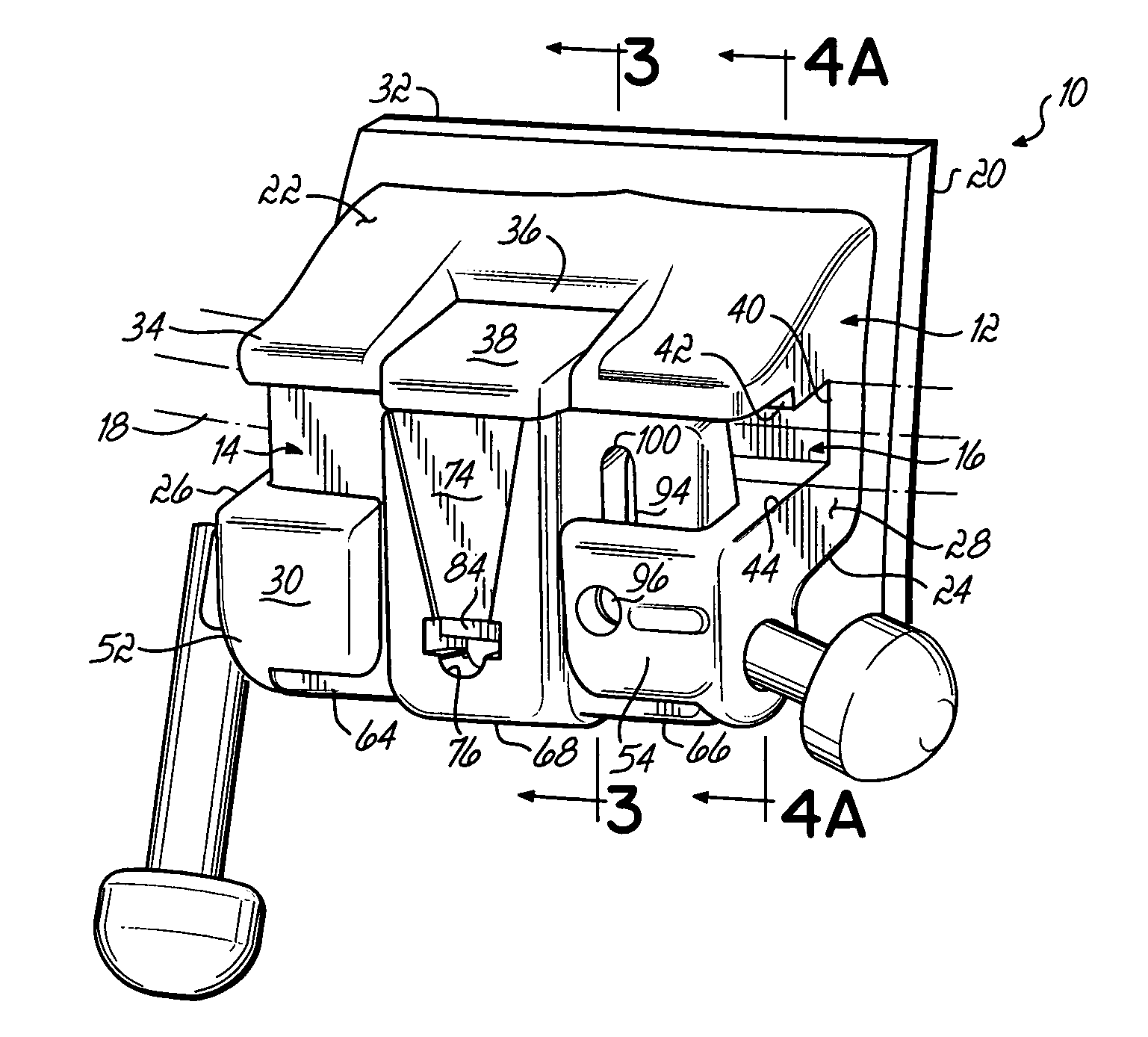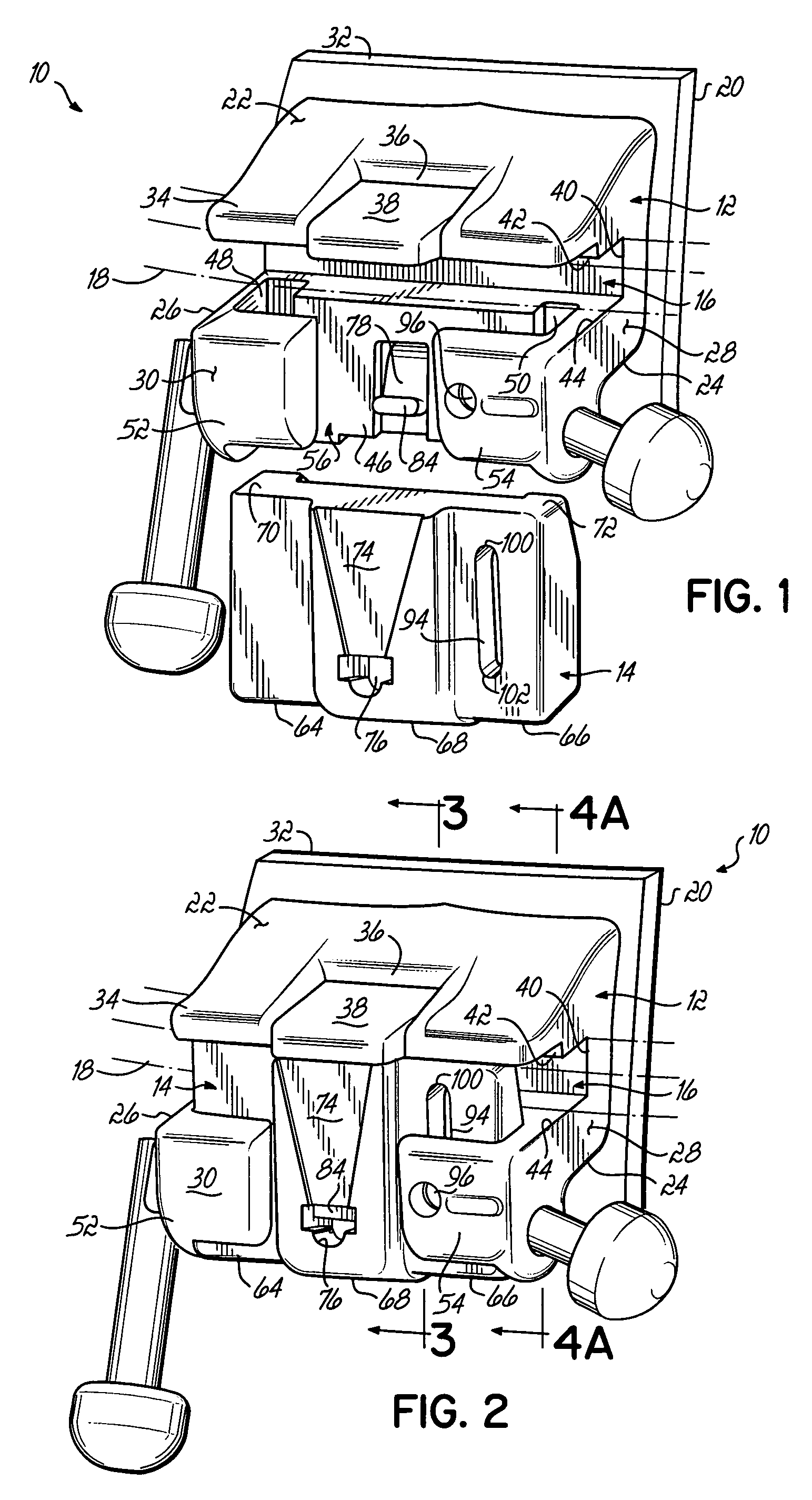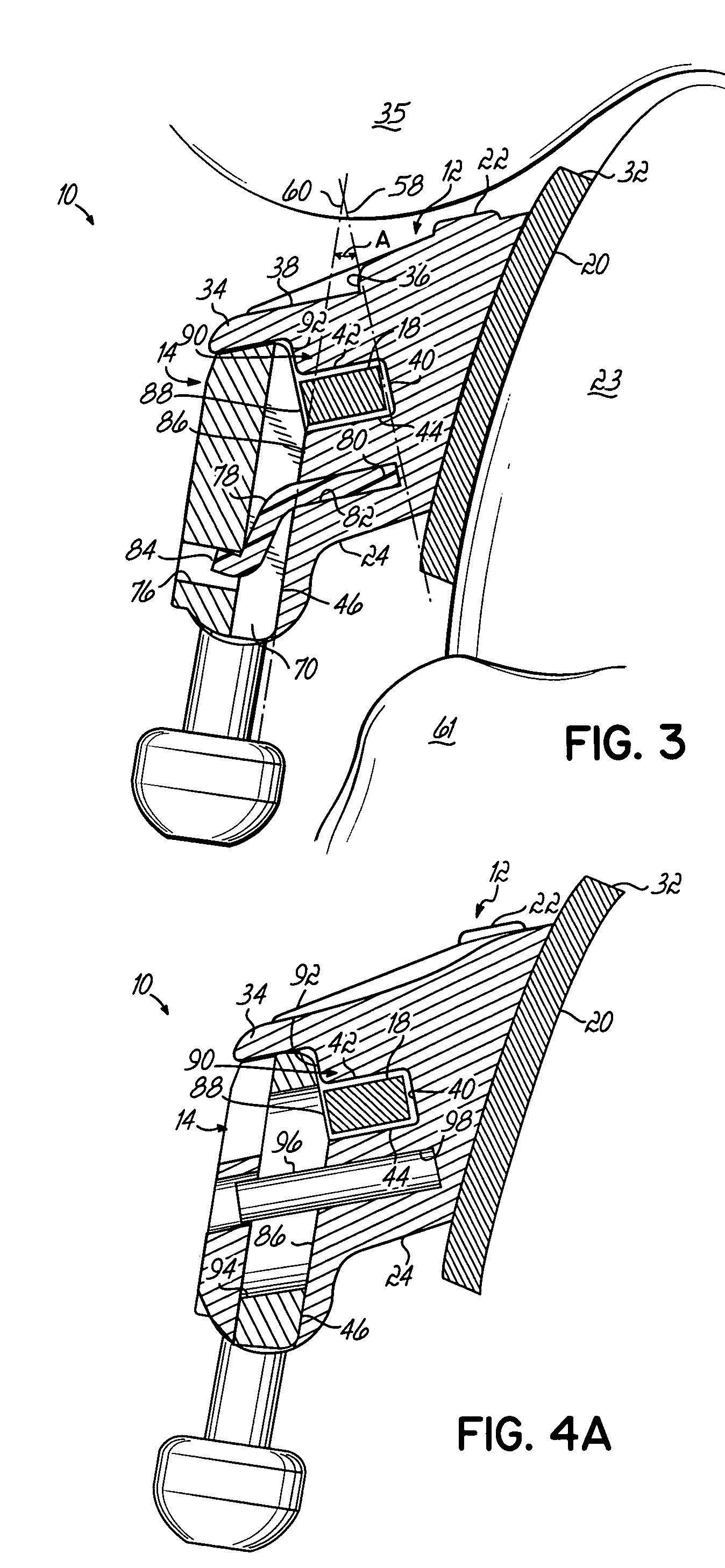Self-ligating orthodontic bracket
a self-ligating, orthodontic technology, applied in the field of orthodontic brackets, can solve the problems of preventing movement of the archwire, unable to fix the archwire, and unable to meet the needs of patients,
- Summary
- Abstract
- Description
- Claims
- Application Information
AI Technical Summary
Benefits of technology
Problems solved by technology
Method used
Image
Examples
Embodiment Construction
[0022]Although the invention will be described next in connection with certain embodiments, the invention is not limited to practice in any one specific type of self-ligating orthodontic bracket. The description of the embodiments of the invention is intended to cover all alternatives, modifications, and equivalent arrangements as may be included within the spirit and scope of the invention as defined by the appended claims. In particular, those skilled in the art will recognize that the components of the embodiments of the invention described herein could be arranged in multiple different ways.
[0023]With reference to FIGS. 1 and 2, an orthodontic bracket, generally indicated by reference numeral 10, includes a bracket body 12 and a movable ligating slide 14 slidably coupled with the bracket body 12. The bracket body 12 includes an archwire slot 16 formed therein adapted to receive an archwire 18 (shown in phantom). The ligating slide 14 is moveable between an opened position in whi...
PUM
 Login to View More
Login to View More Abstract
Description
Claims
Application Information
 Login to View More
Login to View More - R&D
- Intellectual Property
- Life Sciences
- Materials
- Tech Scout
- Unparalleled Data Quality
- Higher Quality Content
- 60% Fewer Hallucinations
Browse by: Latest US Patents, China's latest patents, Technical Efficacy Thesaurus, Application Domain, Technology Topic, Popular Technical Reports.
© 2025 PatSnap. All rights reserved.Legal|Privacy policy|Modern Slavery Act Transparency Statement|Sitemap|About US| Contact US: help@patsnap.com



